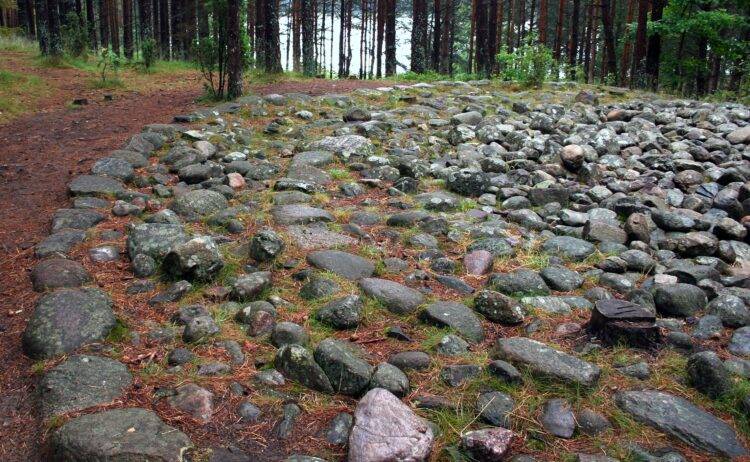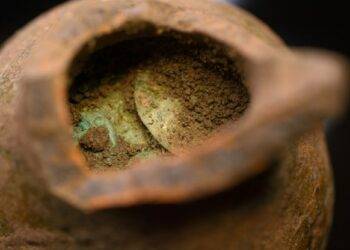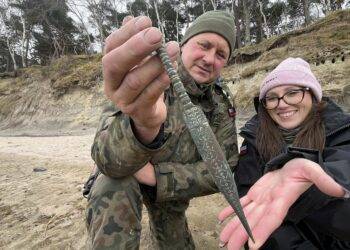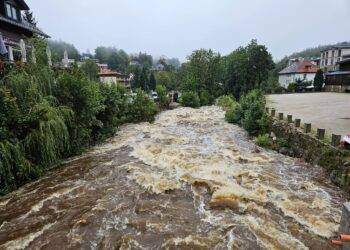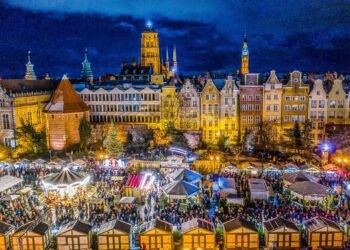Nestled in the serene pine forests of Węsiory, near Lake Długie, lies a lesser-known archaeological wonder often referred to as the “Polish Stonehenge.” This enigmatic site features a series of stone circles and burial mounds, captivating both tourists and researchers alike with its historical and mystical allure.
The stone circles in Węsiory, despite not matching the grandeur or fame of their Celtic counterpart in England, present an impressive sight. The site comprises twenty stone structures, with the largest circle having a diameter of 16 meters. Archaeologists have uncovered over a hundred cremation and skeletal graves, many containing well-preserved ornaments and jewelry, highlighting the significance of the site in ancient times.
The stone circles, formed from rectangular steles reaching up to one and a half meters in height, have intrigued scientists and historians for decades. The most prominent circle measures 26 meters in circumference. Of the four main circles, three remain in relatively good condition, while the fourth has suffered partial destruction.
Historical and Cultural Significance
The origin and purpose of these stone circles have sparked various theories and debates among scholars. Initially, some believed they served as grave markers. However, Professor Ryszard Wołągiewicz, an expert on the Wielbark culture, contested this hypothesis. After analyzing the site, Scandinavian folklore, and historical accounts, Wołągiewicz proposed that the circles were gathering places for tribal elders. These elders, possibly seeking the guidance of their deceased ancestors, made decisions affecting their community’s future and held judicial proceedings within the circles.
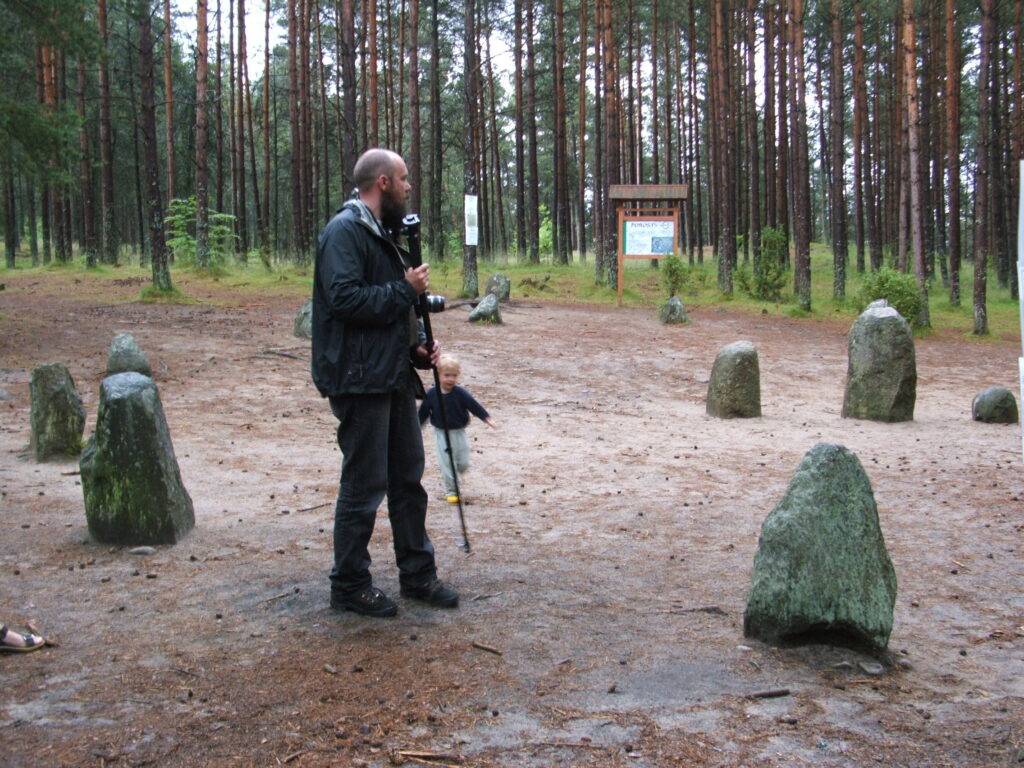
The stone circles are thought to date back to the migration period of the Goths, who traveled south from present-day Scandinavia and the Baltic islands of Öland and Gotland around the turn of the era. The Goths settled in the Pomeranian region for approximately 250 years, establishing villages, farming, and engaging in animal husbandry and craftsmanship. This period saw the development of the Wielbark culture, known for its distinct burial practices.
Modern Mysticism and Paranormal Theories
Beyond their historical context, the stone circles of Węsiory have also become a focal point for modern mysticism and paranormal theories. Some visitors report experiencing a tingling sensation when entering the circles, attributing it to the site’s supposed healing energy. Eugeniusz Leciej, head of the Gdynia-based Association for the Study of Stone Circles, claims that the circles emit mysterious energy that can restore the balance of energy fields in the body, providing therapeutic effects.
Leciej, who has studied the site for 16 years, suggests that the circles’ radiation can be measured using instruments like Geiger counters and magnetic field detectors. This belief in the circles’ healing properties attracts many visitors who stand silently among the stones, eyes closed, awaiting a surge of energy.
Theories of Ancient Astronomical Observatories
In addition to these mystical interpretations, there are theories that the stone circles may have served as ancient astronomical observatories. These circles, similar to those found in Scandinavia known as “dommaringar” or judge’s circles, could have been used to determine the timing of agricultural activities such as sowing and harvesting.

However, the exact origin of the stone circles remains a topic of debate. Leciej doubts that the Goths were the builders, pointing out the absence of similar structures in southern Europe, where the Goths also settled. He suggests that the circles predate the Gothic settlement and were already present when the Goths arrived.
Ancient Legends and Modern Speculations
One local legend attributes the construction of the stone circles to the mythical Stolemowie, ancient giants said to have inhabited the region. This tale, coupled with other accounts of mysterious discoveries, such as reports of giant skeletons found in the 1950s, fuels further speculation about the site’s origins.
Erich von Däniken, a Swiss author known for his controversial theories on ancient astronauts, mentioned Węsiory in his writings. He speculated that the stone circles might be remnants of extraterrestrial landing sites, a theory that, while lacking scientific validation, adds to the site’s allure.
Tourist Attraction and Cultural Heritage
Today, the stone circles of Węsiory are a significant tourist attraction, drawing visitors interested in both history and the supernatural. The site is part of the Stone Circle Trail, which connects similar structures across the Pomeranian region. Local organizations, such as the Association for the Development of Węsiory, actively promote the site and its history through educational programs for children and community events.
Visitors can explore the stone circles and burial mounds, with amenities such as parking and a small refreshment stand available at the entrance. The nearby Archaeological Museum in Gdańsk displays numerous artifacts unearthed at the site, offering further insight into the region’s rich historical tapestry.
Ireneusz Korda from the Sulęczyno Community Cultural Center, which oversees the Węsiory site, expresses hopes for the establishment of a local museum dedicated to the Goths and their cultural heritage. He humorously remarks that the Goths were the first tourists to the area, and with continued efforts, more modern visitors will follow in their footsteps.
The enduring mystery and historical significance of the stone circles in Węsiory ensure that this “Polish Stonehenge” will continue to captivate and intrigue future generations.

